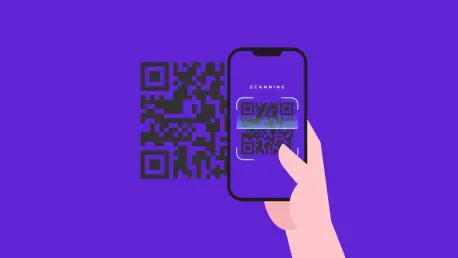In today’s fast-paced corporate landscape, human resources departments are constantly seeking innovative tools to enhance employee engagement and streamline complex processes, and one surprisingly effective solution is gaining traction. QR codes, once primarily associated with marketing campaigns, have evolved into a powerful, cost-effective technology that can transform how HR teams manage information and connect with employees. By bundling multiple resources into a single scannable code, this simple tool offers a modern approach to tackling common challenges in recruitment, onboarding, training, and internal communications. Beyond just simplifying access to information, it provides valuable data insights that can help refine strategies. As workplaces become increasingly digital and information-heavy, adopting such user-friendly solutions can make a significant difference in creating a seamless and engaging employee experience.
Transforming HR Operations with Technology
Streamlining Recruitment Efforts
In the competitive realm of talent acquisition, making a strong first impression on potential candidates is crucial, and multi-link QR codes offer an efficient way to achieve this. By embedding these codes on job posters, business cards, or even digital advertisements, HR teams can direct applicants to a variety of resources with a single scan. These resources might include career portals, employee testimonials, or social media pages that showcase company culture. This approach not only reduces the clutter of multiple links or lengthy instructions but also presents a polished, tech-savvy image that appeals to younger, digitally native candidates. The ease of access ensures that interested individuals can quickly explore opportunities without frustration, potentially increasing application rates and attracting top talent in a crowded market.
Another key benefit in recruitment lies in the ability to track engagement through QR code analytics, providing HR professionals with actionable insights into candidate behavior. Data on scan frequency and the most accessed links can reveal which aspects of a job posting or company profile resonate most with applicants. This feedback loop allows for real-time adjustments to recruitment materials, ensuring they remain relevant and compelling. For instance, if analytics show low engagement with a particular resource, HR can investigate and update content to better align with candidate interests. Such precision in strategy not only saves time but also enhances the effectiveness of outreach efforts, making recruitment a more targeted and successful endeavor.
Enhancing Onboarding Processes
Onboarding new hires often involves a deluge of paperwork, policies, and resources, which can overwhelm even the most prepared employees, but QR codes provide a streamlined solution. A single code included in a welcome email or printed on orientation materials can link to essential resources like payroll setup forms, benefits enrollment pages, and introductory videos. This consolidation eliminates the need for multiple emails or physical documents, reducing confusion and administrative burden for both HR staff and new employees. By centralizing access, the onboarding process becomes more intuitive, allowing hires to focus on integrating into their roles rather than navigating a maze of information.
Beyond simplifying logistics, QR codes during onboarding can also contribute to a positive first impression by demonstrating a commitment to modern, efficient practices. When new employees scan a code and instantly access a well-organized hub of resources, it signals that the organization values their time and experience. Additionally, HR teams can use analytics from these codes to monitor which materials are being accessed most frequently and identify potential gaps in information delivery. If certain links show low engagement, it might indicate a need for clearer instructions or more relevant content, enabling continuous improvement of the onboarding journey and fostering a supportive start for newcomers.
Elevating Employee Engagement and Communication
Facilitating Training and Development
Continuous learning is a cornerstone of employee growth, yet ensuring access to training resources can be a logistical challenge, one that QR codes can effectively address. By placing these codes in break rooms, on digital newsletters, or within internal apps, HR can connect staff to learning platforms, schedules, and supplementary materials with minimal effort. This method not only saves time but also encourages a culture of self-directed development by making resources readily available. Employees are more likely to engage with training content when barriers to access are removed, leading to higher participation rates and skill enhancement across the organization.
Moreover, the data gathered from QR code scans offers a window into training engagement, helping HR teams refine their approach to professional development. Insights into which modules or resources are most popular can guide the creation of future content, ensuring it aligns with employee needs and interests. If certain training links are underutilized, it may prompt a review of their relevance or delivery method, allowing for tailored adjustments. This adaptability ensures that training programs remain dynamic and effective, supporting long-term employee growth while demonstrating HR’s commitment to fostering a learning environment through innovative tools.
Improving Internal Communications
Effective communication within an organization is vital for maintaining alignment and morale, and QR codes can play a significant role in organizing and disseminating information. By embedding these codes in emails, posters, or intranet updates, HR can provide quick access to critical resources such as health and safety guidelines, wellness programs, or policy updates. This approach cuts through the noise of overflowing inboxes and ensures that employees can find what they need without sifting through endless messages. The result is a more focused and less overwhelmed workforce, better equipped to stay informed and compliant with organizational standards.
The added advantage of analytics further enhances internal communications by offering measurable feedback on employee interaction with shared materials. HR teams can track which updates or resources receive the most scans, gaining clarity on what matters most to staff. For example, high engagement with wellness program links might indicate a strong interest in mental health support, prompting further investment in such initiatives. This data-driven strategy allows for more personalized and impactful communication, ensuring that messages resonate with employees and contribute to a more connected and supportive workplace culture.
Reflecting on Tech-Driven HR Innovations
Looking back, the adoption of multi-link QR codes in HR practices proved to be a small yet impactful step toward modernizing employee experiences. Their ability to consolidate resources, streamline processes, and provide actionable data insights offered a practical solution to longstanding challenges in recruitment, onboarding, training, and communication. As organizations navigated the complexities of a digital workplace, this technology emerged as a complementary tool that alleviated administrative burdens, allowing HR professionals to focus on strategic priorities like culture and employee wellness. Moving forward, the challenge lies in integrating such innovations with broader HR systems to maximize their potential. Exploring partnerships with tech providers for customized QR solutions or combining them with other digital tools could further elevate their impact. Ultimately, the journey with QR codes highlighted the value of embracing simple, user-friendly advancements to build a more engaged and efficient workforce.









